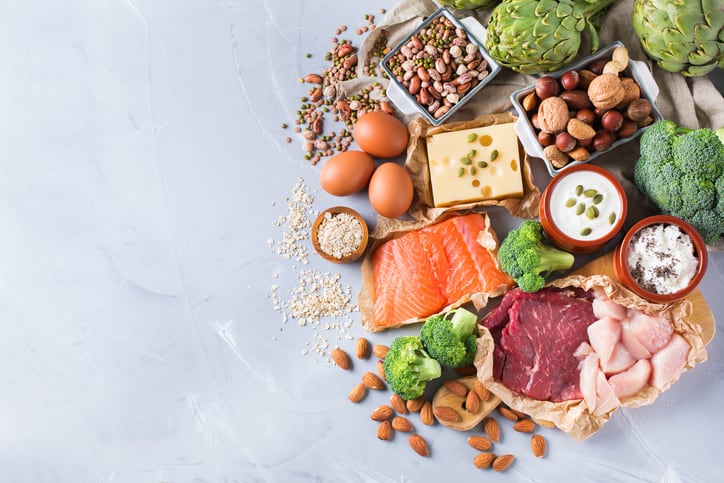In addition, when analysing intakes by main meals, none of the studied subjects achieved their target protein or leucine intakes at breakfast. It was noted that only 32% met protein targets at dinner, whilst 59% did for lunch.
For leucine intakes, only 29% and 13% of patients met targets for lunch and dinner, respectively.
“To the best of our knowledge, this is the first study assessing protein distribution at meals in elderly patients with T2D,” the Italian researchers highlight.
They add: “Our findings expand the literature on this important topic, demonstrating the inadequacy of protein and leucine intake in the elderly with T2D. In light of the higher risk of frailty, disability, and sarcopenia in elderly patients with T2D compared with their nondiabetic counterparts, the present data underline the need to implement appropriate nutritional preventive strategies.”
Shifting needs
There is substantial evidence indicating the heightened protein requirements of the elderly population, to prevent associated muscle losses and the subsequent increased risks of injury and disability. This follows the established relationship between protein intake and muscle mass and strength within this population.
Evidence has shown that intakes of 25-30g of protein in each meal, in particular the branched chain amino acid of leucine, is adequate to promote muscle synthesis. In those with type 2 diabetes (T2D), the regulation of protein turnover is significantly affected by the metabolic disturbances. Therefore, in elderly diabetic populations there is an even greater need to meet these recommendations.
However, it has been noted that protein intakes in the elderly population can be far below the recommended intakes, whilst there is a general lack of data available on adherence rates in elderly populations with T2D. Therefore, the researchers stress that the present study sought to gather in-depth knowledge of protein and leucine intakes in this population to help prevent associated sarcopenia and frailty.
Study
The study involved the recruitment of 138 T2D patients, including 91 men and 47 women, aged 65 years and older. Data on protein and leucine intakes at each meal were gathered using 24h dietary recall interviews conducted by trained dieticians.
The total daily protein intake was expressed as g/day and g/kg BW/day (per kilogram of body weight per day), leucine intake as mg/day. The PROT-AGE study group recommends average daily intake of at least 1.0 g protein /kg BW/day while older adults who have acute or chronic diseases need even more dietary protein of 1.2–1.5 g/kg body weight/d.
Evidence-based recommendations indicate a leucine intake of 3000 mg at each meal in elderly people.
In the current study, an adequate intake of protein and leucine for meals was considered to be greater than 25 g and 2500 mg for protein and leucine, respectively.
It was observed that the average protein intake within the group studied was around 0.9g/kg BW/day, with only 23% of patients complying with the recommendations. It was reported that none of the patients studied achieved their target protein intake at breakfast, whilst 59% did at lunch, and just 32% did at dinner.
Similarly, none of the patients achieved their recommended leucine intakes at breakfast, with an average intake of 579 mg. Those meeting targets at lunch was 29%, and only 13% met targets at dinner.
Explained
“Our data indicate that in elderly patients with T2D, the average protein intake is low, particularly at breakfast and dinner, and that the leucine intake at each meal is remarkably below the recommendations,” the report summarises.
The researchers discuss how their findings are similar to those collated within previous studies, such as one whereby 14% of elderly diabetics met protein targets for lunch and 28% did for dinner.
“It is well recognized that, in addition to the quantitative aspect, it is important to take into account the quality of dietary proteins, which mainly depends on their bioavailability (linked to digestion and absorption processes) and biological value (amino acid profile),” they highlight, regarding potential dietary intervention strategies to meet these inadequate intakes.
To further expand on the implications of these findings on the health of this population, further studies are required to understand the effect of these inadequate protein and leucine intakes on muscle health.
Source: Nutrients
https://www.mdpi.com/2072-6643/15/6/1345
“Protein and Leucine Intake at Main Meals in Elderly People with Type 2 Diabetes”
by Elena Massimino, Anna Izzo, Carmen Castaldo, Anna Paola Amoroso, Angela Albarosa Rivellese, Brunella Capaldo and Giuseppe Della Pepa

